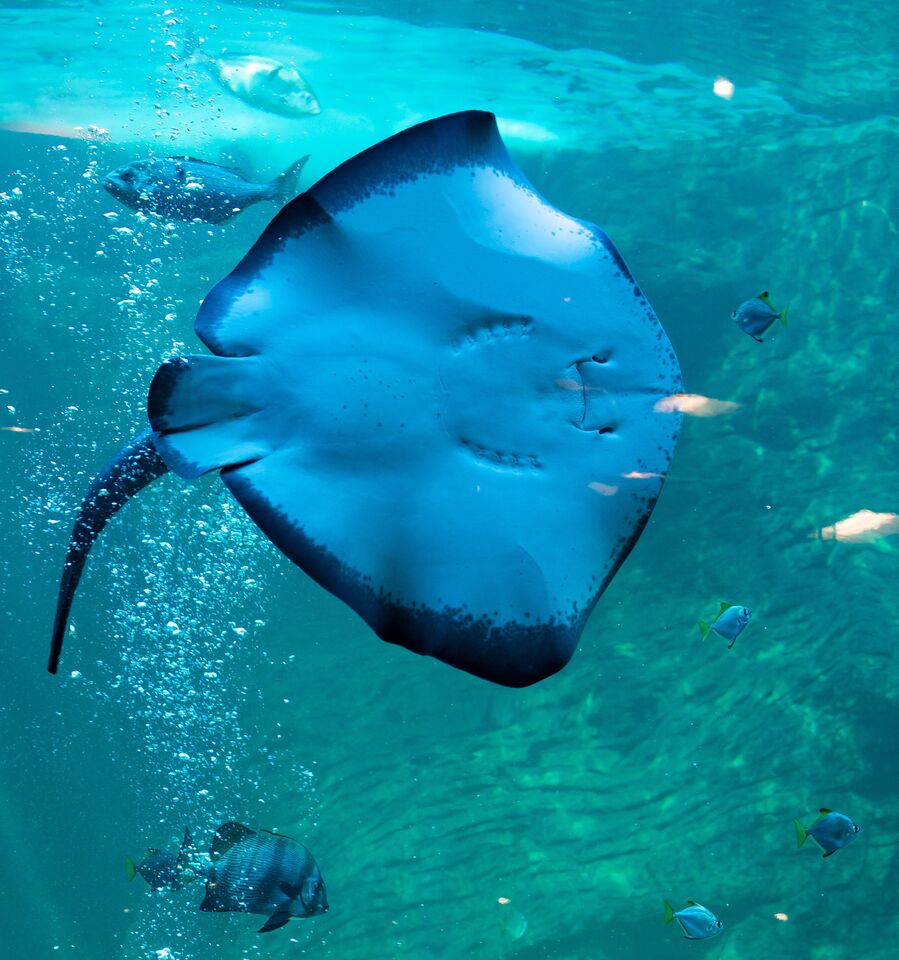Appearance and lifestyle:
Like sharks, short-tail stingrays (Bathytoshia brevicaudata) have cartilaginous skeletons. They are flat fish that has gill slits on the ventral (under) side of their bodies. Two spiracles behind the eyes on the dorsal (upper) surface draw in water which flows over the gills before exiting through the gill slits. With a maximum width of 2.1m, a total length of at least 4.3m and weighing over 300kg, the short-tail stingray is possibly the largest of the stingray species.
Rays are bottom dwellers which use camouflage and toxic spines or electric shocks to defend themselves against predators. They glide along the sand in search of food or hide just beneath it, waiting for their prey. Rays give birth to live young (they are ovoviviparous).
Habitat:
Short-tail stingray's can be found in coastal waters, estuaries and near rocky reefs.
Diet:
They glide along the sand in search of food or hide just beneath it, waiting for their prey. Using electro-receptors and highly developed senses of smell and touch, they find molluscs, crustaceans, worms and small fishes, which they crush with flattened teeth.
Threats:
Listed as Orange (caution) on the SASSI Consumer Seafood List. Some of the other threats faced by short-tail stingrays is pollution, climate change, bycatch etc.
